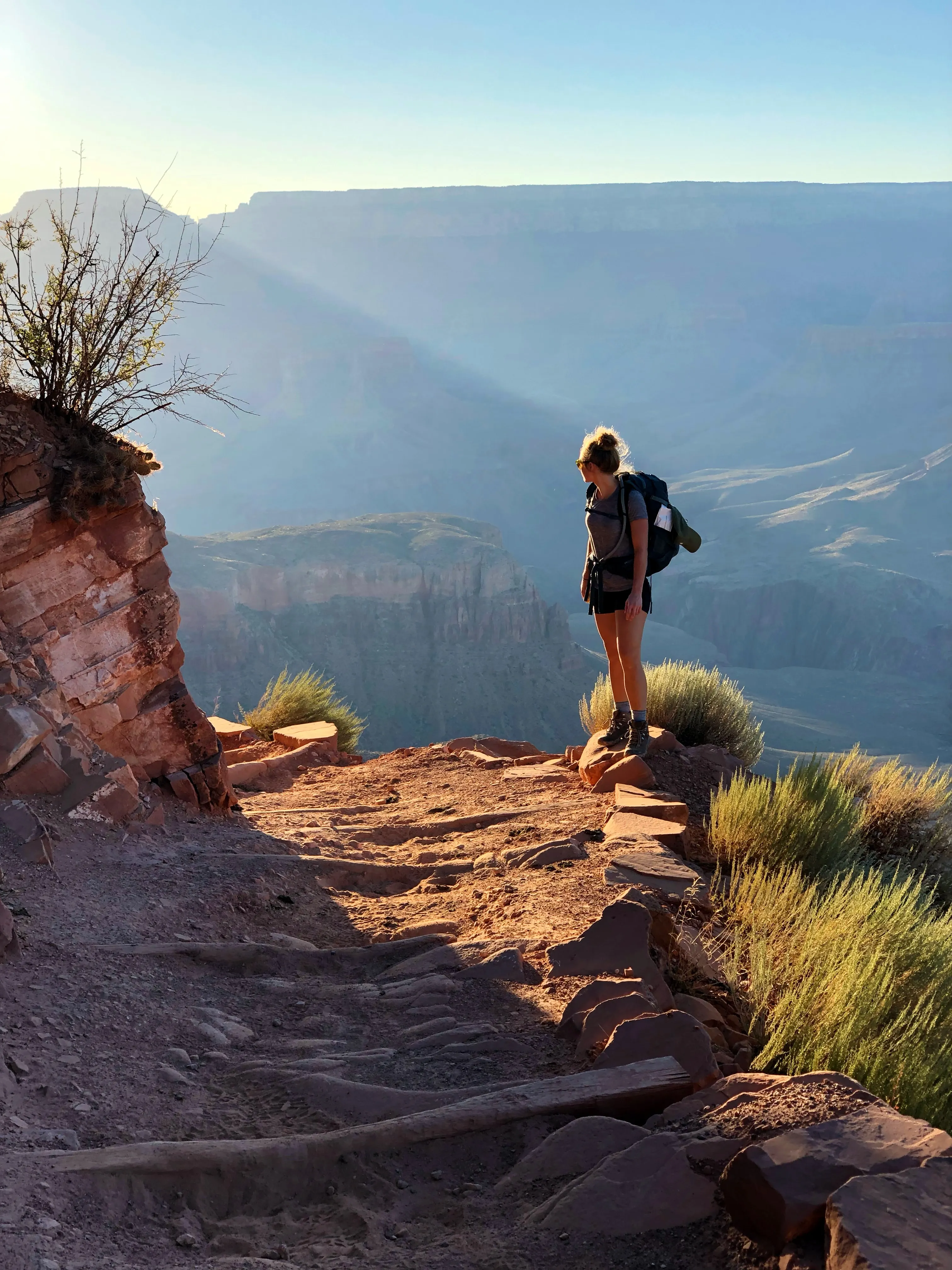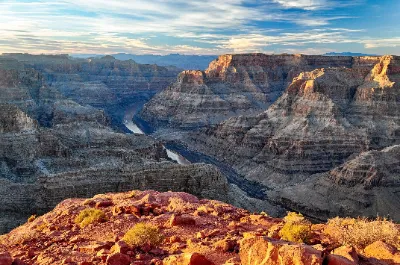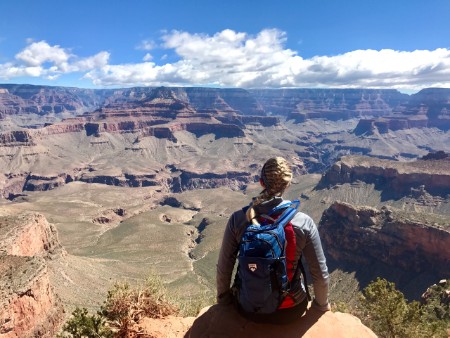Grand Canyon fear of heights
Do you suffer from Grand Canyon fear of heights but still really want to visit?
Using the tips provided here, you can conquer your fear and enjoy the breathtaking view of the Grand Canyon.
The Grand Canyon is one of the biggest tourist attractions in the United States, known for its breathtaking view of the deep gorge carved by the Colorado River.
However, a visit to the Grand Canyon can be a frightening experience if you have a fear of heights.
Visiting the Grand Canyon may not be as enjoyable if you have a fear of heights.
In this article, I will provide tips to help you overcome your fear of heights, so you too can enjoy a visit to the Grand Canyon.
What is a Fear of Heights?
A fear of heights is an anxiety disorder characterized by an intense fear of heights, also known as acrophobia.
If you have a fear of heights, you may experience symptoms such as:
- dizziness.
- sweating.
- trembling.
- heart palpitations.
- or even panic attacks.
The Grand Canyon and Fear of Heights

The Grand Canyon is one of the most impressive natural wonders in the world.
I speak from experience. Many years ago I had the opportunity to visit the Grand Canyon.
I sat at the edge of the Canyon for a long time, taking in its grandeur.
However, if you suffer from a fear of heights, a visit to the Grand Canyon can be a scary experience.
The view of the deep gorge and the abyss can be overwhelming.
Fear of heights Grand Canyon tips
I have a few tips for you if you suffer from fear of heights but still want to visit the Grand Canyon.
Tip 1. Breathing
Pay attention to your breathing. When you start feeling anxious, you tend to breathe through your mouth and take quick, shallow breaths.
This actually increases your feelings of anxiety.
Try to avoid both of these behaviors and breathe through your nose instead.
Breathe in and out slowly, with the exhale being longer than the inhale.
Tip 2. Avoid excessive use of alcohol and caffeine
Alcohol and caffeine can increase anxiety levels and reduce the ability to control anxiety.
Tip 3. Overcome your fear of heights
It is now possible to completely overcome your Grand Canyon fear of heights.
With the latest methods, you can quickly and easily solve your fear of heights yourself.
Master Coach Jan Heering clearly explains how you can easily and quickly overcome your fear on your own.
Everyone can apply this simple method.
Do the exercises, and you will soon be free from your fear of heights!
Coming Soon!
Grand Canyon safety measures
When visiting the Grand Canyon, it is important to take safety measures.
Some important safety measures include:
- Stay behind the fences and barriers. These are there to keep you safe, so do not ignore them and do not get too close to the edge.
- Wear good shoes. Make sure you wear good, sturdy shoes that support you well and do not slip on the rocky surface.
- Take a guide with you. If you feel unsure about your safety, consider taking a guide with you. A guide can help you navigate and provide you with the necessary information to stay safe.
- Be aware of the weather. The weather in the Grand Canyon can change quickly and be unpredictable. Be aware of the forecast and take additional precautions if necessary.
Fear of heights and visiting the Grand Canyon

Acrophobia can be a challenge when visiting the Grand Canyon.
However, it does not necessarily mean that you cannot experience this magnificent location.
Applying the above tips, lets you keep your fear under control, or even eliminate it completely.
This will enable you to enjoy the breathtaking view of the Grand Canyon just like everyone else!
FAQ
Do people get altitude sickness at the Grand Canyon?
Yes, people can get altitude sickness at the Grand Canyon, especially if they are not acclimated to high altitudes.
Altitude sickness, also known as acute mountain sickness, occurs when the body does not get enough oxygen due to low air pressure and reduced oxygen levels at high elevations.
Symptoms of altitude sickness can include headaches, nausea, dizziness, fatigue, and difficulty sleeping.
It is important for visitors to the Grand Canyon to take precautions to prevent altitude sickness, such as drinking plenty of water, avoiding alcohol and caffeine.
It is also important to allow time for acclimation before engaging in strenuous activities.
If symptoms of altitude sickness develop, it is important to seek medical attention and consider descending to a lower elevation to reduce the symptoms.
Does the Grand Canyon have high elevation?
The answer is a definitive yes. Grand Canyon stands at an average elevation of 7,000 feet (2,134 meters) above sea level, making it one of Arizona's highest points.
With such a lofty height, visitors to the Grand Canyon can expect to experience cooler temperatures, especially at night.
While the Grand Canyon's elevation may not be as high as some of the world's tallest peaks, it's still a significant height.
The Grand Canyon offers stunning views and a unique perspective of the surrounding landscape.
In the Grand Canyon, visitors can marvel at the massive canyon walls towering above them, as well as the stunning beauty of the Colorado River below.
So, if you're planning a trip to the Grand Canyon, make sure to pack some warm clothing and prepare for the higher altitude.
If you are looking for a memorable natural adventure, you must visit the Grand Canyon with its awe-inspiring views and breathtaking beauty.
Can you walk down into the Grand Canyon?
The Grand Canyon offers a variety of trails that lead to the bottom of the canyon, including the popular Bright Angel Trail and South Kaibab Trail.
Both trails are well-maintained and offer stunning views of the canyon, but they are also quite steep and require a significant amount of physical exertion.
It's important to be prepared before attempting a hike into the Grand Canyon.
You should wear comfortable and appropriate clothing and footwear, bring plenty of water and snacks, and be aware of the weather conditions.
It's also recommended to check in with the park rangers and let them know your hiking plans.
Additionally, it's important to remember that hiking out of the canyon can be even more challenging than hiking down, as you will be climbing up steep inclines and dealing with potentially hot and dry conditions.
Plan your trip carefully and be sure to take breaks and rest as needed.
Entire contents copyright © Morpheus Instituut. All rights reserved.
London Eye Fear of heights
Morpheus Emotionele Bevrijding Home
Wikipedia Grand Canyon
Wikipedia acrophobia
Dsclaimer Grand Canyon fear of heights
Author: Jan Heering
Jan Heering has been a coach and author for over 20 years. He specializes in rapidly resolving fears and stress. He has written over 30 books.


